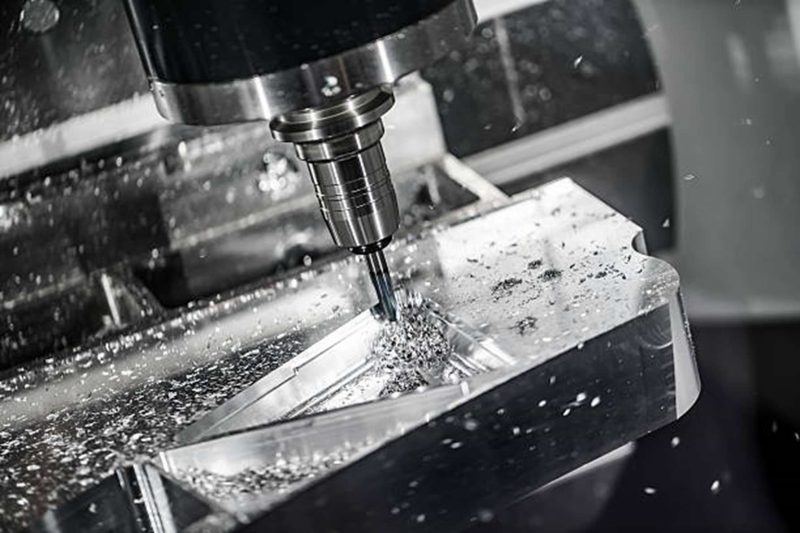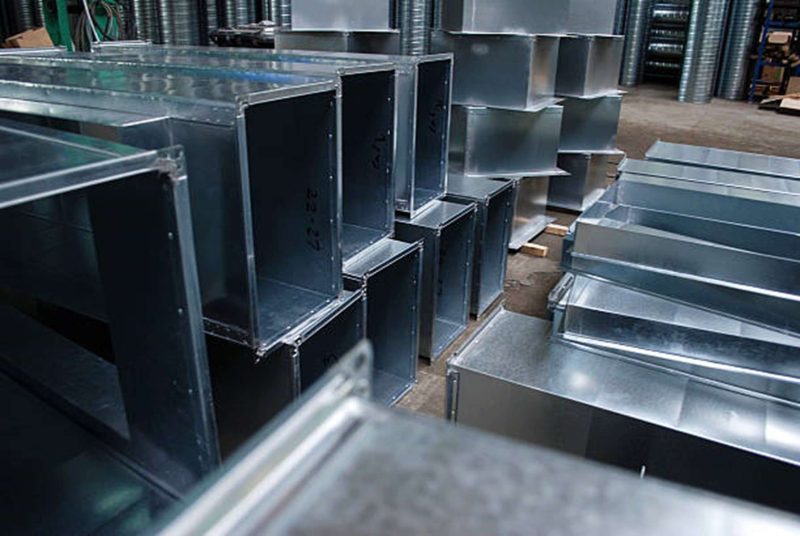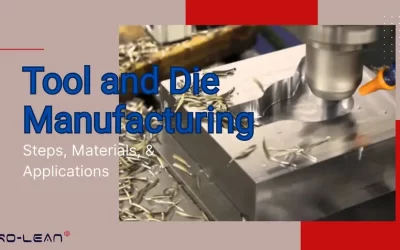
Food processing operation
Advancements in manufacturing technology have elevated the food-processing industry to a higher level. All food-processing sectors now rely on CNC Machining and other manufacturing approaches for automation, production lines, packaging, and processing equipment.
The manufacturing industry has been helping food-processing businesses to make the process efficient, quick, and cost-effective. It has transformed the food sector by increasing its reliance on automation and decreasing its use of labor. Developing new equipment, production lines, and any mechanism for food processing goes through the prototype development step. The creation of prototypes and testing allow any system or machinery to be efficient and food-compatible.
This article will discuss the prototype development process for the food industry, material considerations, involved steps, and many more.
What is meant by Prototype Development?
Prototypes are the physical reality of any design. It is a preliminary version of a product or system used to test and evaluate its design, functionality, and usability. Developing prototypes for the food-processing industry is slightly different from any other application because it requires consideration of food-grade materials.
Food processing prototypes are typically used to test new designs, technologies, or processes before being used in actual production. Examples of food processing prototypes include customized packaging machines, food preservation equipment, or automated processing mechanisms (Hashini, 2015).
Steps Involved in Prototyping for Food Industry
Before proceeding with the prototype development process, define all the purposes of the intended equipment, machinery, or any system—for example, intended use, size, and many more.
Step1: Finalize the design
The prototype development for food-processing equipment and machinery starts with the finalization of mechanical design. Depending on the manufacturing approach, the design can be 2D or 3D, although a 3D model is the best choice. The method includes all features, dimensions, and tolerances. In addition, the design needs to have practical features and achievable tolerances.
Step 2: Choose the manufacturing approach.
It is crucial to choose the right manufacturing approach for food-processing prototypes. The method appropriate for your prototypes depends on the requirements for intended parts, complexity, and manufacturing cost. Common manufacturing approaches include CNC machining, sheet metal fabrication, and die casting.
Services that we offer related to the food industry:
Sheet Metal Fabrication Service
Prototypes for Startups: What Do We Offer?
Why is small-batch CNC Machining an advantage for your business?
Step3: Post-processing
Once the parts or products are created, they undergo further processing, such as surface finishing. The post-processing depends on the intended use of prototypes and quality fabrication.
Step4: Assembly
Complete prototypes for food processing can often not be created in a single shot. It might involve the manufacturing of separate parts and mechanisms. In such cases, details go through assembly.
Step5: Validation
This step involves testing the food-processing prototype to ensure that it meets the goals and objectives of the project. This may include testing for food compatibility, safety, quality, and efficiency.
Step6: Refinement and improvements
The prototype may need to be refined or improved based on testing and validation results. This step involves making changes to the design and development as required.
Material Selection for Food-processing Prototypes
The selection of material is the most critical decision in developing food-processing prototypes. The fabric must meet all the physical and mechanical properties requirements and food compatibility.
Food grade materials
Materials that are safe to use in contact with food and suited for food processing and packaging are food-grade materials. Different food-related agencies regulate these materials, such as:
the US Food and Drug Administration (FDA),
the European Medicines Agency (EMA),
the National Medical Products Administration (NMPA) of China.
The following are the common Food-grade materials;
- Stainless steel
Stainless steel is used in prototyping and manufacturing food-related products due to its many advantages. Stainless steel grades 304 and 316 are commonly used for food-processing-related products.
It is corrosion-resistant due to the presence of chromium in its composition, which forms a thin oxide layer on the surface of the steel that protects it from moisture. Stainless steel can be used in contact with water and acidic or salty substances. Other advantages of stainless steel are durability, metallic hygiene, thermal stability,
Related resource:
- Aluminium
Although Aluminum is a food-grade material, it depends on the specific application. Producing acidic foods such as tomatoes and lemons is not a good choice. However, its excellent thermal conductivity and light weight make it a good choice for use in equipment that needs to be heated or cooled quickly.
- Polyethylene (PE)
PE is safe to use in food-processing equipment and related products. It is flexible and highly resistant to chemicals. PE is also cheaper than other food-grade materials.
- polypropylene (PP)
This thermoplastic is known for its high strength and stiffness. It is also resistant to chemicals and has a high melting point. It can be used in various applications, such as food packaging, kitchen utensils, and storage containers.
Food-grade prototyping and mass-production materials include glass, polycarbonate, HDPE, LDPE, and ceramics.
Try Prolean Now!
What are the Common Manufacturing Practices in Food-processing Prototype Developments?
CNC machining, sheet metal fabrication, and die casting are the most popular manufacturing approaches for prototyping in the food-processing industry.
1. CNC machining

CNC machining
The manufacturing process known as CNC machining involves using computer-controlled machines to shape materials like metals and plastics into the required shape. It makes specialized parts for food-processing machinery or prototype food-processing items like chocolate or candy molds. For product development and testing in the food business, CNC machining provides a precise and effective way to produce prototypes.
2. Sheet metal fabrication

Fabrication of food containers
Sheet metal fabrication is a manufacturing method that involves cutting, bending, and shaping sheet metal into a desired shape. It is another popular approach for creating prototypes of food-processing equipment, such as conveyor systems, hoppers, and tanks.
It allows for the precise and efficient creation of complex geometries, even for large-scale equipment that involves cutting the sheet metal to the desired shape using tools such as a laser cutter, water jet cutter, or shears. Then, the shaping with presses, brakes, or rollers. The final product can be welded, bolted, or fastened together to create a functional prototype.
Read more: What is Sheet Metal Prototyping? Examples and Advantages
3. Die casting
The die-casting process involves injecting molten metal under high pressure into a die of the intended shape. It can be used to create prototypes of food-processing equipment, such as conveyor systems, hoppers, and tanks, as well as food-related products, such as cookware, kitchen utensils, and packaging.
For the prototypes, the die of the intended geometry is first created from hard materials such as hardened steel, followed by Pressure injection of molten metal. Then, the casting is ejected from the die and subjected to further machining or finishing.
Consideration in the Development of Food-processing Prototypes
The optimized 3D design and selecting an appropriate manufacturing approach are not enough for prototypes of the food-processing industry. It requires several considerations.
Food safety and sanitation
When developing a prototype for a food processing system, safety and sanitation are essential considerations. Food safety refers to precautions to ensure that the final product is free of harmful contaminants and germs. In comparison, sanitation refers to the steps taken to preserve cleanliness and avoid contamination.
This consideration includes using food-grade materials, designing equipment and facilities that are easy to clean and sanitize, and implementing proper sanitation procedures. It might involve several tests, such as physical, microbiological, and chemical testing (Claudia Pinna).
Technical competency
It is yet another crucial aspect to consider while developing food processing prototypes. This relates to whether the prototype can be created and produced using available technologies. The prototype needs to be designed with the current state of technology in mind. It involves making sure the prototype can be created within the limitations of the manufacturing facility and choosing the necessary tools and materials.
Quality and consistency
Quality and consistency refer to the ability of the prototype to produce a high-quality end product, batch after batch, consistently. This consideration ensures the quality production or processing of foods. Therefore, the prototype must be designed and developed with these factors in mind, such as appropriate ingredients, carefully controlling the processing conditions, and implementing quality control measures.
Manufacturing cost and scalability
Cost refers to the expenses associated with developing and manufacturing the prototype. In contrast, scalability refers to the ability of the prototype to be produced on a larger scale in the future.
The design and development process should account for the cost of materials, equipment, and technology to guarantee that the prototype is cost-effective. It ensures that the prototyping cost is reasonable and does not outweigh the advantages of the finished product.
Conclusion
In conclusion, the prototype development process for the food-processing industry involves several steps to ensure the efficiency, safety, and compatibility of new designs, technologies, or processes. This process includes defining the prototypes’ purposes, finalizing the design, choosing the manufacturing approach, post-processing, assembly, validation, refinement, and improvements.
Prototype development for the food-processing industry could be complex to do on your own since it requires a thorough understanding of each minor detail and cutting-edge manufacturing technique. ProleanTech is a professional service provider of food-processing prototypes with every food-grade material option. To help you with your project, we offer subject-matter specialists and advanced manufacturing technologies. Please contact us anytime if you are interested in our CNC rapid prototyping and mass manufacturing services.
FAQ’s
What is the purpose of developing prototypes in the food-processing industry?
Developing prototypes in the food-processing industry aims to test new designs, technologies, or processes before using them for actual production. This makes it possible to produce equipment and machinery for food processing efficiently and economically.
What are some examples of food-processing prototypes?
Some examples of food-processing prototypes include customized packaging machines, food preservation equipment, or automated processing mechanisms.
What are the steps involved in the development of food-processing process prototypes?
The steps involved in the prototype development process for the food-processing industry include defining the purposes, finalizing the design, choosing the manufacturing approach, post-processing, assembly, validation, refinement, and improvements.
What are the important considerations in the development of food-processing prototypes?
The crucial considerations are food safety, sanitation, quality consistency, manufacturing cost, and scalability.
Bibliography
- Claudia Pinna, L. R. (n.d.). Additive Manufacturing applications within Food industry: an actual overview and future opportunities. Industrial Systems Engineering.
- Hashini, A. P. (2015). Design and Development of a Low-Cost Prototype Food Penetrometer to Evaluate the Quality of Foods. International Journal of Scientific and Engineering Research.




I’m curious about how material selection is crucial for food-processing prototypes. Can you elaborate on this aspect
Material selection is vital in food-processing prototypes due to the need for food safety and compatibility. Food-grade materials, like stainless steel and polyethylene, are essential for ensuring prototypes are safe for food contact and meet industry standards. The choice of material impacts the prototype’s functionality, durability, and compliance with health regulation